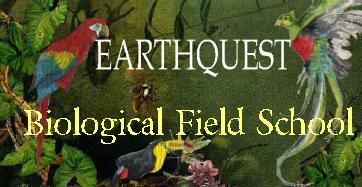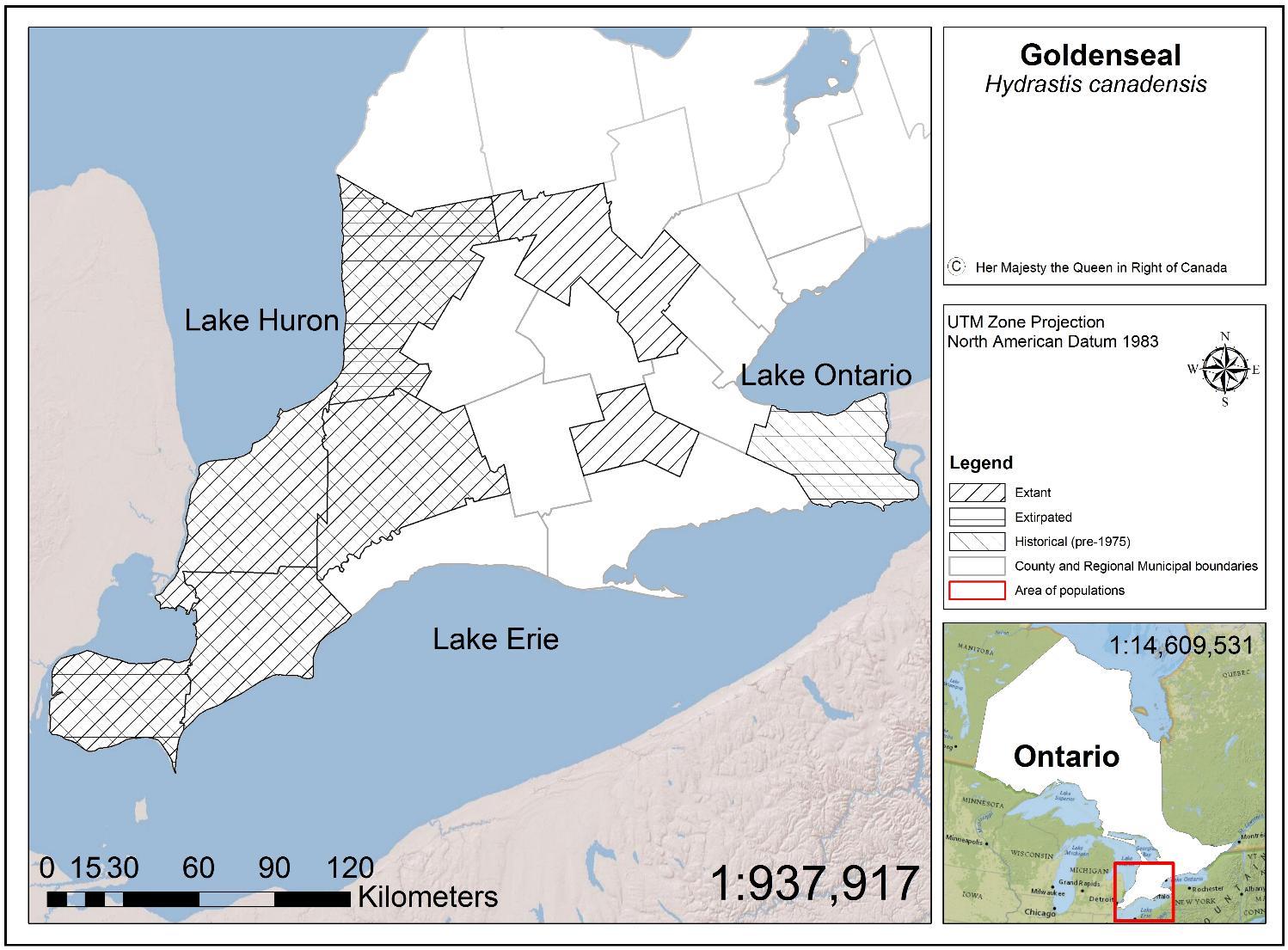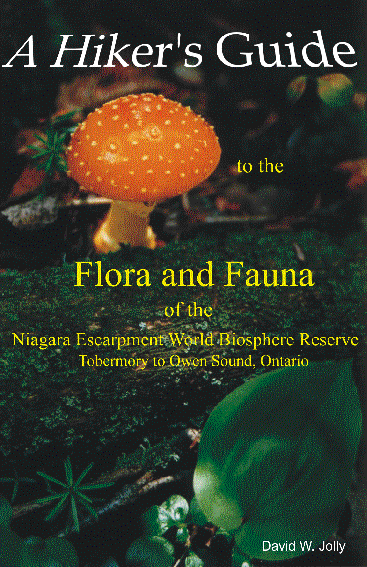
Spring | |||||||||||||||||||
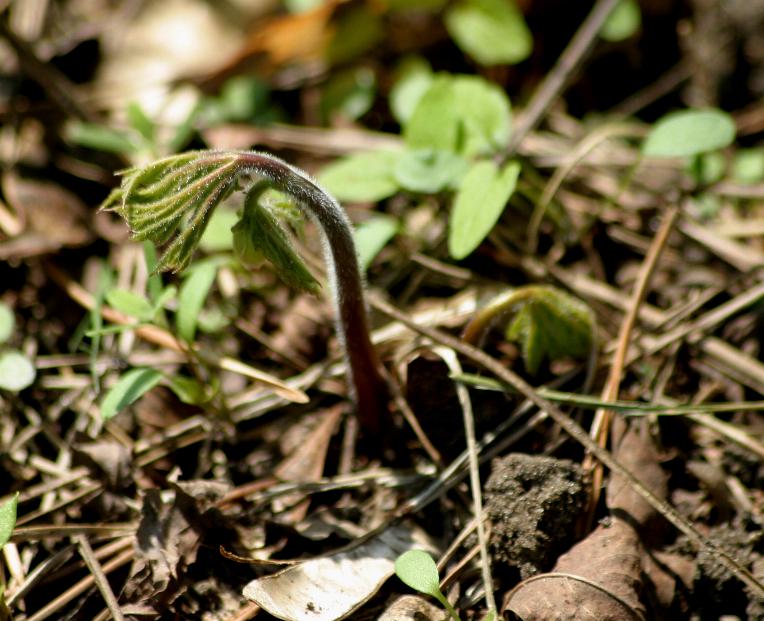 |
Emergence period: May 2 - 10 | ||||||||||||||||||
Summer | 3 leaved plant approximately 6 years old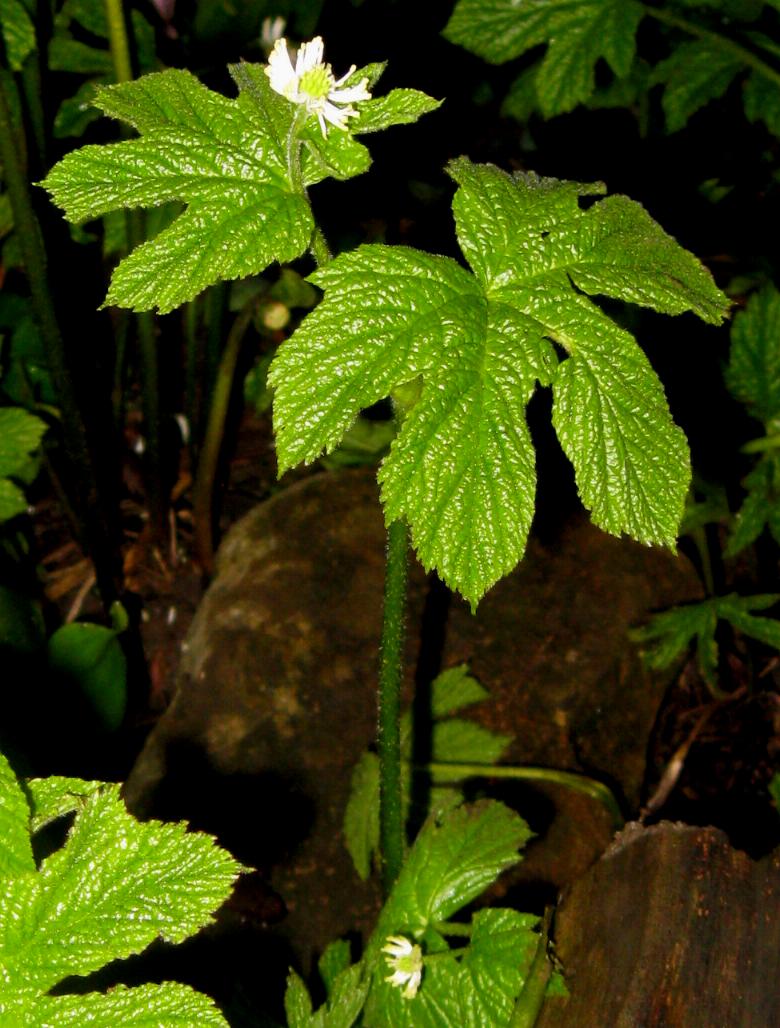 Flower |
Flowering period: April 28 - May 30 (EARTHQUEST 2015b, Jolly 2016) 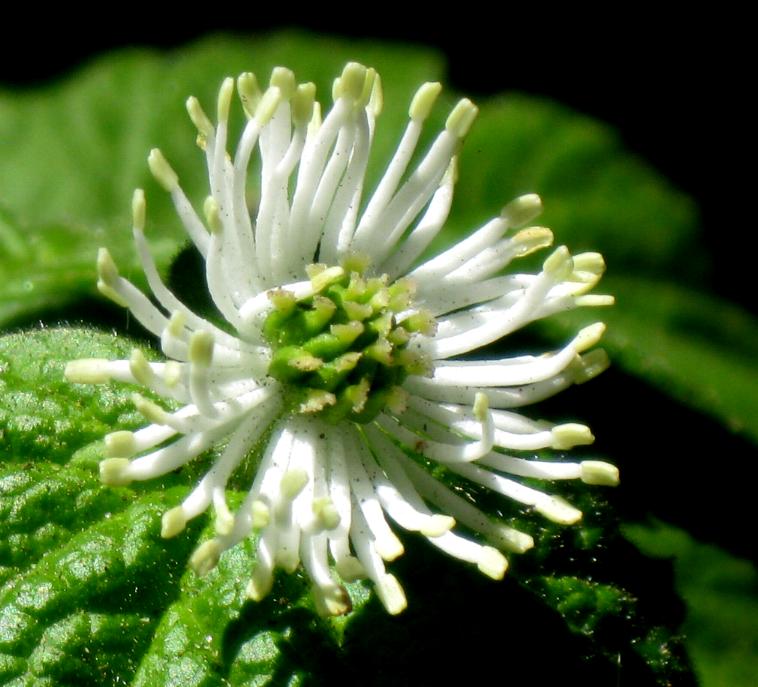 Fall | |||||||||||||||||
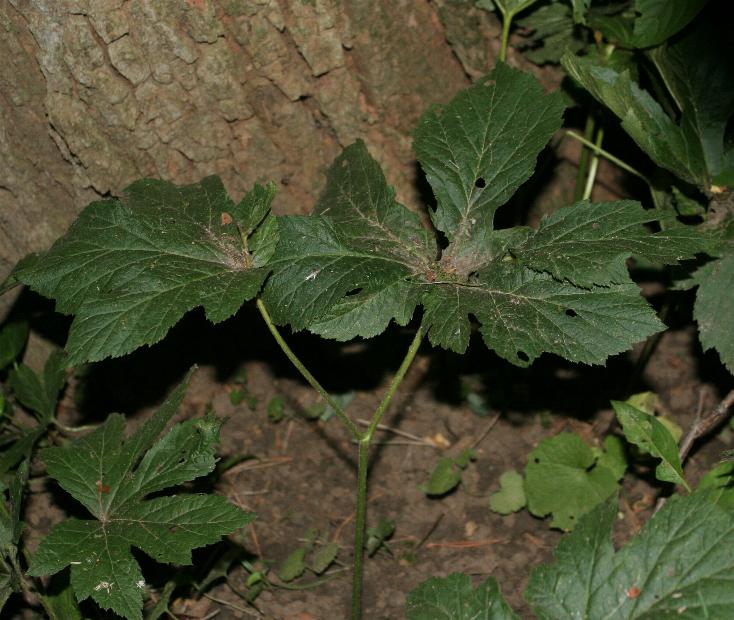 |
2 leaved plant < 6 years old | Fruit Resembling a raspberry when mature in June or July 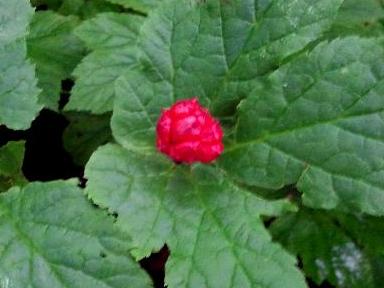 |
|||||||||||||||||
Winter | December: 2 leaved plant , 6 years old
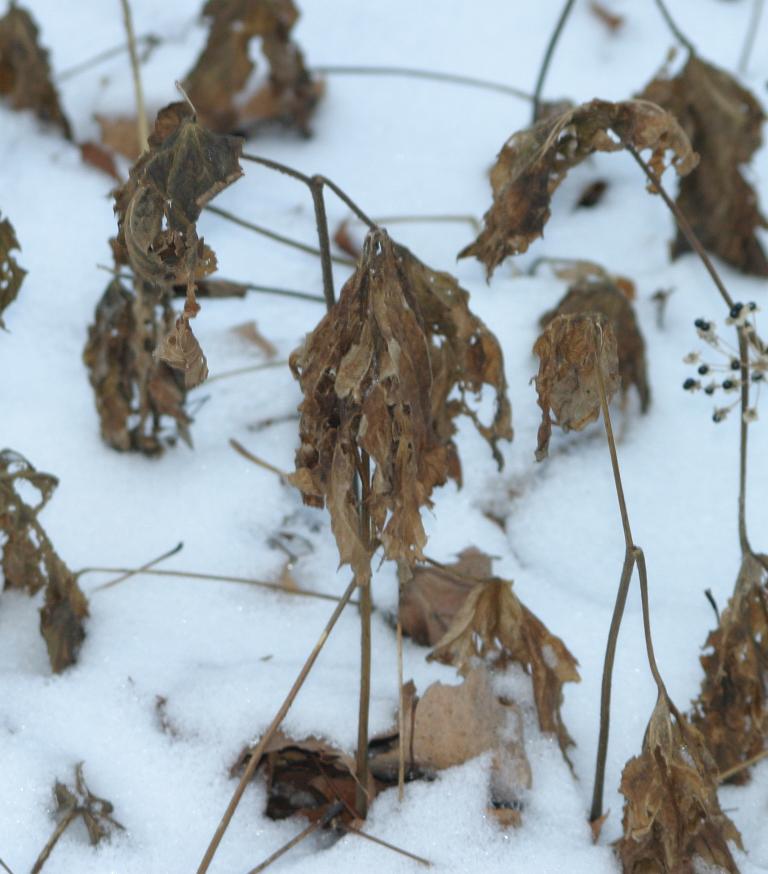
Flowering period: Flowering date records extracted from
the EARTHQUEST Plants of Ontario database representing
51 records over a 126 year period show flowers begin
blooming April 28th lasting until May 30th (Jolly 2015a, Jolly 2015b).
5 Second Rule Identification: Alternately arranged palmately
lobed and veined plant with
achenes or fruits in center of
uppermost leaf.
Biology and Ecology: The inedible fruit resembles a dark red raspberry with druplets that do
not separate from their recepticles. Please refer to Jolly (2016) for a detailed
description of Goldenseal biology and ecology.
Population Size: Historically, it is not known how extensive
Goldeneal was in the province. Since the 1960s several surveys
were conducted by White (1990) in 1989 , Catling and Sinclair
(2000) in 1998 resulting in an estimate of 38 naturally occurring
populations in 1989. Botham (1981) reports an historical record of
this species reported by Charles Dodge in 1914 along the Detroit
River in Essex county, but this population is likely extirpated. More
recently, a couple of populations have been discovered; one in Huron county
and one in Brant county. The NHIC reports
fewer than 20 extant Ontario occurrences. A more accurate picture
reveals 24 extant populations in the province distributed among 7
counties and regional municipalities; Brant, Essex, Chatham-Kent, Lambton, Huron, Middlesex,
and Wellington (newly discovered 2013) amounting to a total
population estimate of 76, 053 plants (Jolly 2016). Fifty one records
exist in the EARTHQUEST Plants of Ontario database.
Habitat & Soils: Ecological Land Classification (ELC) data for Goldenseal has been updated by Sinclair and Bickerton (2016) and Jolly (2016). To date, the author and other surveyors have classified 12 communities from 11 Goldenseal sites:
. Dry-Fresh Basswood Deciduous Forest Type (FODM4-9);
Threats: Goldenseal populations in Ontario are threatened by alteration to the natural disturbance
regime, logging, selective cutting, housing construction, changes in hydrology and drainage,
harvesting, invasive species and trampling of plants (Jolly 2016). Populations located on public
land are more susceptible to the dangers of harvesting (Jolly 2016).
Recovery: A recovery strategy has been compiled by the author
and published by the Ontario Ministry of Natural Resources and Forestry (MNRF). Please refer to Recovery Strategy for Goldenseal
(Hydrastis canadensis) in Ontario (Jolly 2016). The Goldenseal is also included in Appendix II of
the Convention on International Trade in Endangered Species of Wild Fauna and Flora (CITES),
which sets controls on the international trade and movement of species that have been, or may be,
threatened due to commercial exploitation. This species should be assessed by COSEWIC by
April 2017 with the final status report posted to the SARA Public Registry by autumn of 2017 (Timm
pers comm. 2015).
Biometrics: Goldenseal is a perennial long-lived herb that can grow up to 22 - 50 centimetres
high. This plant has one to three leaves, one at the base and two on the upper part of the stem.
Leaves are generally three to seven-lobed and doubly toothed, or serrated. The flowers are
distinctive in that they lack showy petals or sepals but have conspicuous, showy white stamens,
which may number as many as 50 (Jolly 2016). The flower diameter averages 1.4
centimeters.
Environmental Protection: This species is protected as a Schedule 1 plant under the federal Species at Risk Act. Provincially, Goldenseal received designation as threatened and protection on June 30, 2008 under the provincial Endangered Species Act.
References:
1. Catling, P.M. and A. Sinclair. 2000. Status of Goldenseal, Hydrastis canadensis (Ranunculaceae), in Canada. Canadian Field-Naturalist 114(1):111-120
Distribution: Restricted to Brant, Chatham-Kent, Essex, Lambton, and Middlesex counties Ecoregion 7E; Huron and Wellington county in Ecoregion 6E. Source: Jolly (2016).
| ||||||||||||||||||
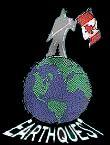 EARTHQUEST (Canada) for the Environment
EARTHQUEST (Canada) for the Environment
